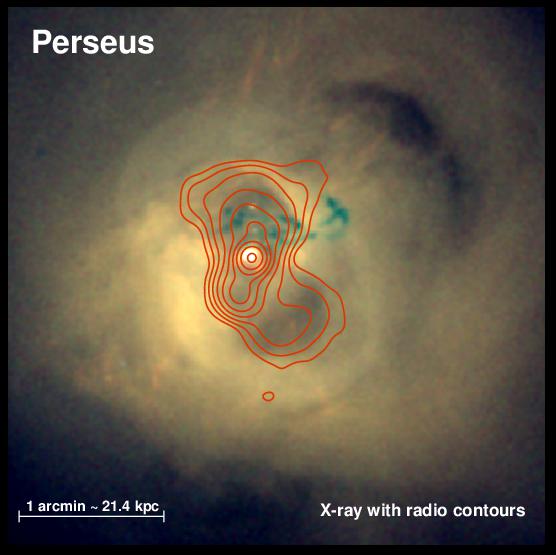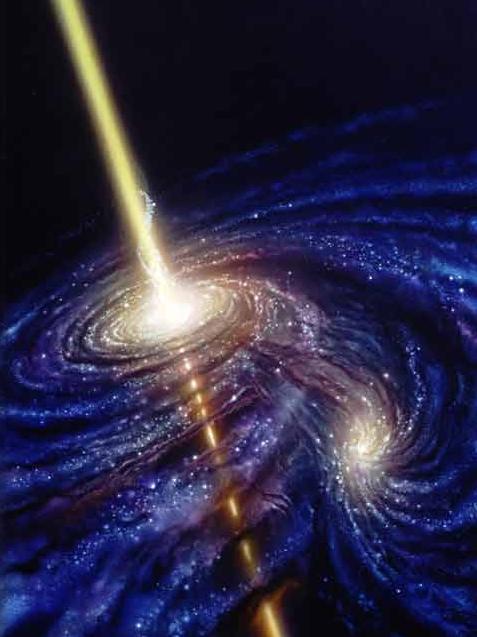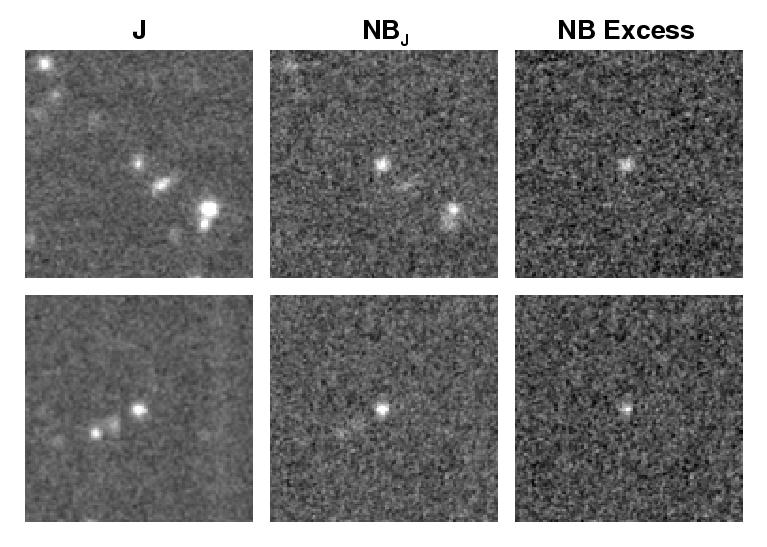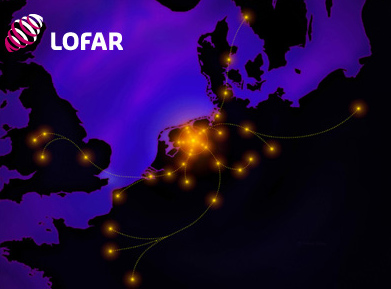|
|
Research Activities
|
My research covers a wide range of extragalactic
observational astronomy, including:
 |
Active Galactic Nuclei (AGN), and AGN feedback:
My interests lie in understanding the AGN phenomenon, and its
connection to the formation and evolution of normal
galaxies. This interest dates back to my PhD research, when I
used the Hubble Space Telescope to study the interactions
between powerful distant radio sources and both their host
galaxies and the surrounding gas, showing that the interactions
are particularly strong in young (small) radio galaxies. I
have constructed large samples of radio-loud AGN in the nearby
Universe by combining wide-area radio surveys with the Sloan
Digitised Sky Survey, and used these to carry out detailed
statistical studies of AGN host galaxies, from which I have
been able to show that energetic feedback from radio-loud AGN
can control the rate of growth of massive elliptical galaxies
in the local Universe. More recently I have been extending this
analysis to higher redshifts to track the evolution of
radio-AGN feedback across cosmic time.
|
 |
Black hole
accretion modes and jet-launching:
My AGN studies show that the fuelling of AGN can occur in two
different modes: radiatively-efficient accretion at high
accretion rates, through a "standard" geometrically thin
accretion disk, and radiatively inefficient accretion at low
accretion rates through a geometrically thick accretion
flow. The latter are highly efficient at launching powerful
radio jets. I am studying the connection between AGN fuelling
and jet-launching to understand black hole accretion on small
scales, as well as the large-scale feedback effects on the host
galaxy. I am also studying the connection between black hole
accretion and host galaxy star formation in
radiatively-efficient AGN.
|  |
Cosmic Star
Formation
I have had a long-standing interest in
studying star formation across cosmic time. I co-led the UKIRT
large Campaign Project HiZELS. This project used the
wide-field near-infrared imaging capabilities of the WFCAM
telescope, together with narrow-band filters, to select
emission line galaxies across all of cosmic
time. Emission-line surveys are a particularly powerful method
for tracing the evolution of cosmic star formation: galaxies
are identified on the strength of their emission line and thus
crudely represent a star-formation rate-selected sample, which
must lie in a narrow range in redshift. Using a number of
narrow-band filters we have used a single technique to target
H-alpha emitters across a wide range of redshifts, yielding
large and representative samples at each epoch and with a
uniform selection function. Through extensive follow-up
studies of these sources, we have traced the evolution in the
star-formation rate density across the epoch of peak activity
in galaxies, as well as its distribution amongst the galaxy
population. I have been awarded time on the James Webb Space
Telescope to extend these studies to still higher redshift. I
am also using samples of radio sources from deep extragalactic
surveys to extend these studies to the rarer higher
star-formation rate objects, forming an ideal complement.
|
 |
LOFAR and SKA:
LOFAR is a
new-generation radio telescope, constructed in the Netherlands
and around Europe, which commenced operations in 2012. It has
opened up a completely new low-frequency radio regime, as well
as offering the deepest large-sky area radio surveys currently
available. I am the PI of
LOFAR-UK, which is a
consortium of over 20 Universities coordinating the UK's
efforts in LOFAR, and am the Chair of the LOFAR International
Telescope Board. Scientifically, I am a core member of the
LOFAR Surveys Key Science
Project carrying out deep Extragalactic Surveys with LOFAR
- and within this I lead the deepest tier of the surveys, the
'LoTSS Deep Fields' which had its first data release in 2021.
I have lead responsibility for studies of the evolution of
star-forming galaxies and AGN.
Looking further to the
future, I am involved with efforts to build the
Square Kilometer
Array, having previously been the UK's Science Director for SKA representing the UK on the SKAO Board of Directors.
|
 | Other interests:
I also
work on many other topics relating to cosmology and to
galaxy formation and evolution. I have a long-standing
interest in groups and clusters of galaxies, and the
effect of environment on both star-formation and AGN
activity.
|
| | |



